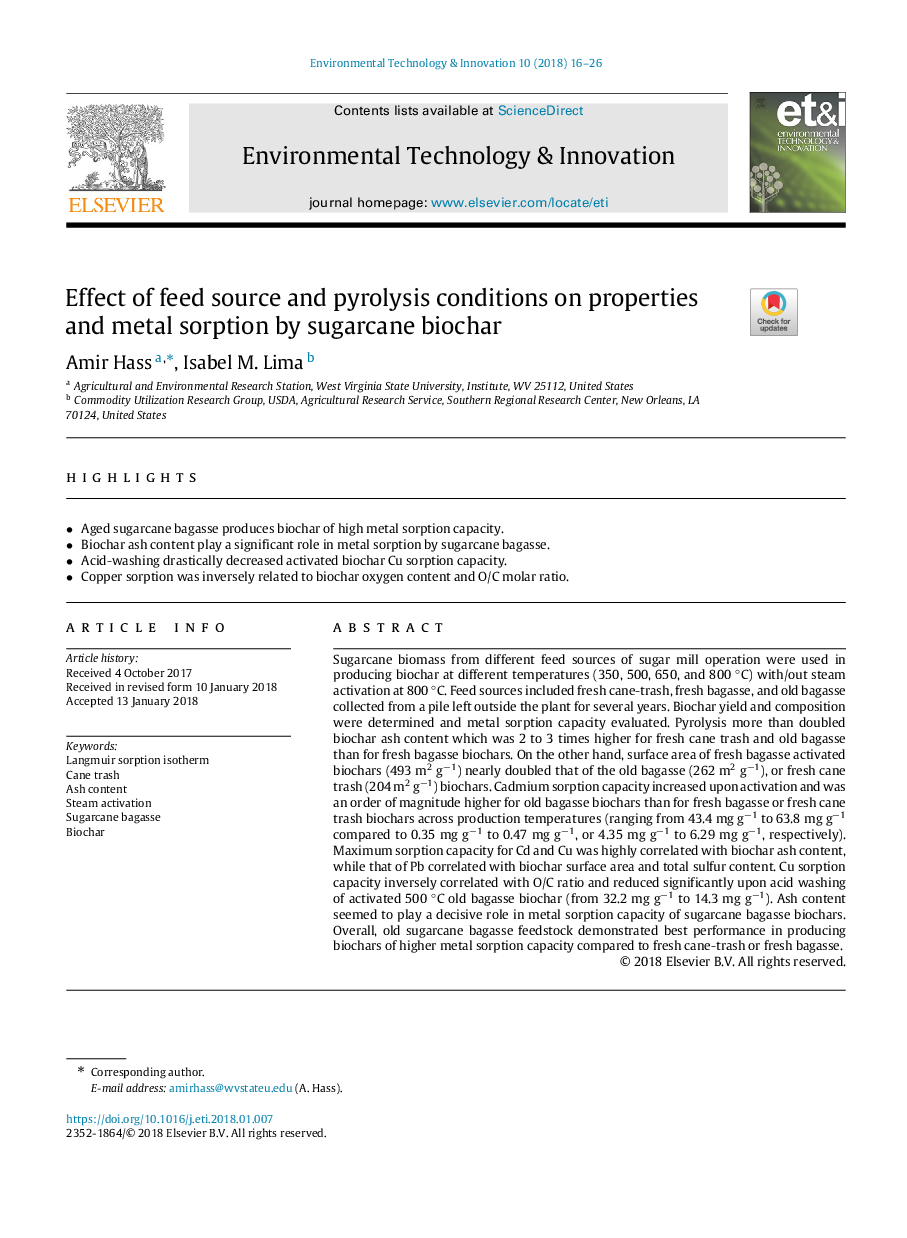| Article ID | Journal | Published Year | Pages | File Type |
|---|---|---|---|---|
| 8857949 | Environmental Technology & Innovation | 2018 | 11 Pages |
Abstract
Sugarcane biomass from different feed sources of sugar mill operation were used in producing biochar at different temperatures (350, 500, 650, and 800 °C) with/out steam activation at 800 °C. Feed sources included fresh cane-trash, fresh bagasse, and old bagasse collected from a pile left outside the plant for several years. Biochar yield and composition were determined and metal sorption capacity evaluated. Pyrolysis more than doubled biochar ash content which was 2 to 3 times higher for fresh cane trash and old bagasse than for fresh bagasse biochars. On the other hand, surface area of fresh bagasse activated biochars (493 m2 gâ1) nearly doubled that of the old bagasse (262 m2 gâ1), or fresh cane trash (204 m2 gâ1) biochars. Cadmium sorption capacity increased upon activation and was an order of magnitude higher for old bagasse biochars than for fresh bagasse or fresh cane trash biochars across production temperatures (ranging from 43.4 mg gâ1 to 63.8 mg gâ1 compared to 0.35 mg gâ1 to 0.47 mg gâ1, or 4.35 mg gâ1 to 6.29 mg gâ1, respectively). Maximum sorption capacity for Cd and Cu was highly correlated with biochar ash content, while that of Pb correlated with biochar surface area and total sulfur content. Cu sorption capacity inversely correlated with O/C ratio and reduced significantly upon acid washing of activated 500 °C old bagasse biochar (from 32.2 mg gâ1 to 14.3 mg gâ1). Ash content seemed to play a decisive role in metal sorption capacity of sugarcane bagasse biochars. Overall, old sugarcane bagasse feedstock demonstrated best performance in producing biochars of higher metal sorption capacity compared to fresh cane-trash or fresh bagasse.
Related Topics
Life Sciences
Environmental Science
Environmental Chemistry
Authors
Amir Hass, Isabel M. Lima,
